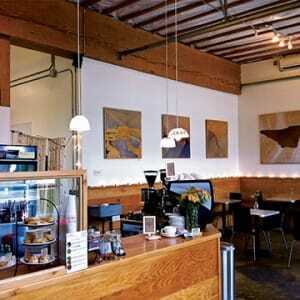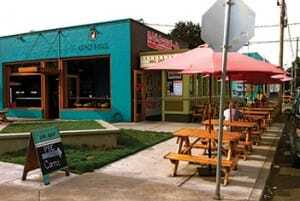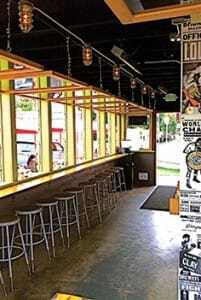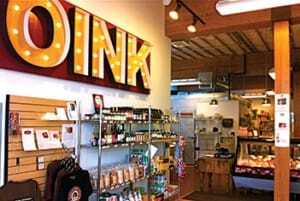Food carts can provide flexible jobs and entrepreneurial opportunities for people who want to set their own hours and agendas. Because they have low startup and operating costs and minimal labor needs compared with those for fixed restaurants, a food cart can provide a livelihood for an entrepreneurially motivated young person or couple.
A Portland State University (PSU) study in 2008 concluded that the average earnings of mobile food carts are between $30,000 and $50,000 per year. Costs to purchase and outfit a food cart can range from $20,000 to $60,000—considerably less than the cost to outfit a restaurant. Also, regulatory issues for food carts are less daunting than for a fixed restaurant. In Portland, Oregon, some developers have clustered food carts in the inner northeast area, and entrepreneurs may lease carts and rent the spaces on which they are situated.
Coupled with a growing affinity for artisanal food and the necessity for affordable choices for the influx of aficionados, the food cart phenomenon has blossomed. With most meals priced under $10, food carts allow those on a budget to continue to eat out economically.
But the realities of operating a food cart during winter rains—with little or no outdoor seating, sporadic patronage, steep seasonal declines in business, and only a port-a-potty available to customers—can present a challenge. Driven to tap the benefits of low barriers to entry, small payrolls, and the energy created by carts grouped in a pod, Portland architect-turned-developer Kevin Cavenaugh figured he could create a permanent place where food cart operators could upgrade their status without taking on the challenges of opening a full-fledged restaurant. The PSU study found that more than half the vendors surveyed planned to move into a storefront someday.
The rising popularity of food carts and micro-restaurants—very small, full-time operations with limited seating and a limited menu—raises interesting questions about whether the economic model of these two food-service formats might generate a profitable method to regenerate flagging, bypassed commercial areas, create jobs and businesses, and generate commercial activity.
Cavenaugh calculated that he could overcome some barriers to entry facing food cart operators wanting to expand to more amenable surroundings. He surmised that by acquiring an existing one-story building at a low cost basis and dividing it into multiple small spaces, he could lease them at rates affordable to food cart operators. They would obtain a fixed location with reliable utilities and small seating areas that can be expanded by being opened to a set-back plaza along the street.
But where would one find such large, one-level spaces along busy commercial arterials at an affordable price? The rediscovery and regeneration of close-in neighborhoods has been geographically sporadic and has left a variety of older buildings that—unlike multilevel warehouses and other large buildings—are impractical for conversion to higher-density residential use.
Cavenaugh recognized potential in automobile dealerships, which have largely moved consolidated brands to larger suburban tracts, leaving vacant a variety of formerly single-brand dealership stores. He speculated that a former Dodge dealership he found in a nondescript commercial area near the busy intersection of Sandy Boulevard and Northeast 24th and Northeast Glisan streets could attract just the sort of food carts that could draw customers from the regenerating residential areas nearby. Though commercial in nature, the area is a short walk or bicycle ride away from the young population attracted to close-in living.
Cavenaugh dubbed the micro-restaurant cluster Ocean because it was a new concept in a large uncharted territory in an undefined commercial area. All the tenants would reinforce one another and be open a reliable 12 hours daily—11 a.m. to 11 p.m. The site occupies 15,000 square feet (1,400 sq m) of land and contains three buildings and parking for eight cars. His project, which opened in November 2012, converted 7,600 square feet (700 sq m) of leasable space and cost $1.5 million, of which $792,000 was for the purchase of the buildings and land.
Cavenaugh believed he could charge rents for small spaces that were affordable to the operators, yet, on a per-square-foot basis, were higher than those for the much larger space used by a typical restaurant.
A comparison of food cart rents and sales with those for traditional retail spaces is informative: a 2010 PSU study found that food carts actually pay much higher rents per square foot than many real estate observers imagine. Food carts studied in Portland were found to pay between $27 and $40 per square foot per year ($290–$430 per sq m) and post annual sales in the range of $200 to $250 per square foot per year ($2,152–$2,690 per sq m). The unusually high per-square-foot rents stem from the fact that food carts average only about 150 square feet (14 sq m), so dollar rents may only range from about $400 to $600 per month, which typically includes electricity, water, wastewater removal, trash disposal, security, and pest control.
Cavenaugh’s spaces for four micro-restaurants quadruple that typical size to about 600 square feet (55 sq m) per tenant, providing space for a kitchen and a seating area for about a dozen people. At about $1,500, his monthly rents are about triple those charged for food carts, but comparable in per-square-foot rent at about $28 ($301 per sq m) per year. In addition, he developed three spaces that offer about triple the space—1,500 square feet (139 sq m)—and dollar rent, but which reduce the rent rate to about $15 per square foot ($161 per sq m). The project was projected to generate an 8.3 percent unleveraged capitalization rate of return.
Though the development program seemed ideal for a food cart operator to graduate to a micro-restaurant, only one new tenant fits that category. And that one, the Pie Spot, which serves both entrée and dessert pies, took one of the large spaces. Actual dollar rents, tenant improvement costs, and regulatory burdens may have been too daunting for most food-cart operators seeking to expand into permanent quarters.
Just as surprising at first glance: the concept was most attractive to existing restaurant owners and operators who wished to experiment with new food concepts. The highest-profile restaurateurs interested were celebrity chefs Caprial and John Pence, who gained national reputations as hosts of the public television show Caprial! Cooking for Friends, masters of cooking classes, and authors of several cookbooks. For 17 years they had also operated a popular restaurant in the Westmoreland/Sellwood section of Portland. They valued the micro-restaurant as a place to experiment with a single food type—crisp, lightly battered Korean chicken wings flavored with three Asian fusion sauces. They named the restaurant Basa Basa after a mythical fire-breathing dragon.
But the Pences’ high-profile experiment failed, and the micro-restaurant closed after nine months. In its place, a food cart operator will open a new concept restaurant called the Sudra, serving an Indian fusion menu that includes vegan samosas, chickpea cutlets, and kale salads. Its owner, Sanjay Chandran, also owns downtown Portland’s Sonny Bowl, a vegetarian and vegan breakfast and brunch food cart.
The economic model of an experimental micro-restaurant attracted other restaurateurs with larger existing venues. One concept, 24th & Meatballs, is modeled after the Meatball Shop in New York City; its owner also owns a much larger and higher-end Mediterranean restaurant called Tabla less than a half mile (0.8 km) away. Relatively low startup costs, affordable rents, and the proximity of another restaurant base to facilitate management proves attractive to those for whom operation of a restaurant and access to capital is not a new endeavor. That attraction is also true for restaurateur Oswaldo Bibiano’s taqueria, Uno Mas Taquiza. He operates Autentica, a larger restaurant three miles (4.8 km) away in the now trendy Alberta area, and Mextiza, five miles (8 km) away in the growing Interstate area.
Fitting the same mold is Slowburger, operated by the owner of the Slow Bar, one mile (1.6 km) away. Serving five kinds of burgers and many more beers, it narrowcasts its fare to a profitable segment of the local market.
A different kind of economic model fits Tails & Trotters, a butcher for which supplying other restaurants accounts for more than 80 percent of its business. It got its start in a commissary and used the low occupancy costs as a way to build up its wholesale butcher business. Relocating to 1,551 square feet (144 sq m) at Ocean constituted settling into a new, permanent location from which to serve and expand its wholesale service business, as well as to generate some on-site retail business that would build its brand.
Today, the micro-restaurant concept may be too new to term a trend, but all the spaces are leased and the model is being tested and refined by the operators.
Ocean may also be generating a new way to finance both the restaurants and the developer. While he arranged a 77 percent loan for the project and investors for 70 percent of the equity in the project—clustering a mixture of compatible tenants with both better credit ratings and incipient ones—Cavenaugh says local private equity pools may be interested in financing future ventures. Thinking small may generate new opportunities for local investors, especially those inclined to deploy capital for local economic development without the participation of local government entities that are dealing with sharply reduced municipal budgets. And for Cavenaugh, this is also a personal venture: he created a loft space in the project for himself and his family. UL
William P. Macht is a professor of urban planning and development at the Center for Real Estate at Portland State University in Oregon and a development consultant. (Comments about projects profiled in this column, as well as proposals for future profiles, should be directed to the author at [email protected].)









